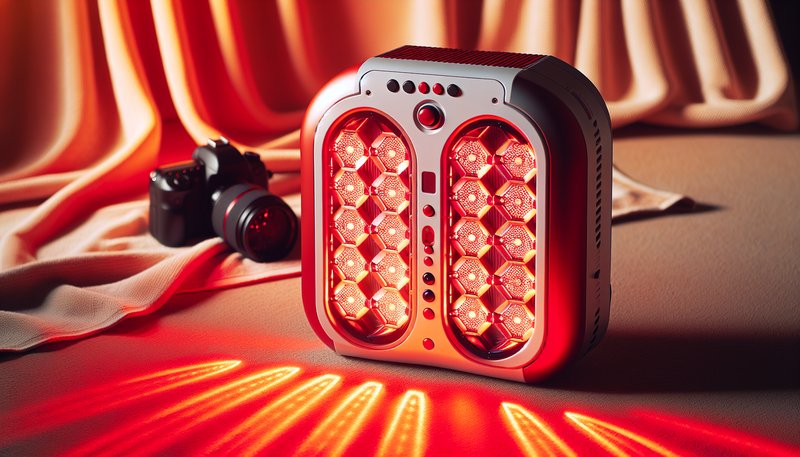Can Red Light Therapy Give You Cancer?
Is red light therapy a safe treatment, or could it pose risks such as cancer?
This article explores the safety of red light therapy while addressing concerns about its potential connection to cancer. We will examine what red light therapy is, its benefits, the considerations surrounding its use, and alternative treatments. By the end, readers will have a clear understanding of whether red light therapy poses any significant health risks.
Key Takeaways
- Red light therapy is generally considered safe when used correctly and does not inherently cause cancer.
- There is currently no substantial evidence linking red light therapy to an increased cancer risk.
- As with any treatment, individuals should be aware of potential risks and consult with a healthcare professional before starting therapy.
What is Red Light Therapy?
Red light therapy (RLT) is a non-invasive treatment that uses low-level wavelengths of red or near-infrared light to promote various health benefits. It has gained popularity in recent years for its application in skincare, pain management, tissue healing, and even hair restoration.
Light is absorbed by the skin and can penetrate deeper tissues, stimulating a biological process that can enhance cellular function. This therapy is often delivered using specialized devices, such as LED panels or handheld units.
Mechanism of Action
Red light therapy works by stimulating mitochondria, the energy-producing structures in cells. By doing so, it enhances the production of adenosine triphosphate (ATP), leading to increased energy availability for cell repair and regeneration.
Learn all about it in Is Red Light Therapy Safe for Thyroid?
Current Usage
RLT is commonly used in dermatology for treating conditions such as acne, psoriasis, and wrinkles. Additionally, it’s used in physical therapy to alleviate pain and inflammation.
What are the Benefits of Red Light Therapy?
This section will now delve into the numerous potential benefits of red light therapy.
Enhances Skin Health
Red light therapy can improve skin complexion, reduce signs of aging, and help heal acne scars. Studies have shown that RLT can boost collagen production, promoting a smoother and more youthful appearance.
Pain Relief
RLT is recognized for its analgesic properties. Numerous studies indicate that it can effectively reduce both chronic and acute pain by minimizing inflammation and promoting the healing of damaged tissues.
Improvement of Muscle Recovery
Athletes and fitness enthusiasts have turned to red light therapy for its ability to enhance muscle recovery. After intense workouts, RLT can help reduce soreness and expedite recovery times.
Additional Benefits
- RLT may improve hair growth in individuals with certain types of hair loss.
- It has been associated with enhanced wound healing due to increased tissue repair and regeneration.
Is it Possible to Get Cancer from Red Light Therapy?
Concerns about whether red light therapy could lead to cancer often stem from misconceptions about the nature of light and radiation. It’s essential to differentiate between types of light exposure.
Most scientific evidence supports that red light therapy does not increase cancer risk. Unlike ultraviolet (UV) light, which is known to cause skin damage and increase cancer risk, red light is non-ionizing and does not alter DNA structure in harmful ways.
What are the Advantages of Red Light Therapy?
- Minimal Side Effects: RLT is generally well-tolerated with few reported side effects compared to conventional treatments.
- Non-Invasive: It offers a pain-free approach to various health issues without the need for surgery or medication.
- Ease of Use: Devices for RLT are available for home use, making the therapy accessible and convenient.
What are the Disadvantages of Red Light Therapy?
- Variability in Results: Not everyone responds to RLT the same way, and some individuals may see limited benefits.
- Cost: Continuous treatments can be costly, especially if multiple sessions are needed.
- Quality of Devices: The effectiveness of RLT can vary significantly depending on the quality and specifications of the device used.
What are the Things to Consider Before Starting Red Light Therapy?
Before engaging in red light therapy, consider the following factors:
Consult a Healthcare Professional
It’s important to discuss any new treatment with a qualified healthcare provider, especially if you have existing medical conditions or are on medications.
Discover our insights Why Red Light Therapy Works
Understanding Your Device
Research the specification of RLT devices thoroughly—wavelength, intensity, and exposure duration can all significantly impact treatment effectiveness.
Treatment Protocols
Follow recommended guidelines for treatment frequency and session duration. Overuse can lead to limited benefits and possibly mild irritation of the skin.
Awareness of Medical Conditions
Individuals with specific medical conditions, such as those with photosensitivity, should approach red light therapy with caution.
What are the Alternatives to Red Light Therapy?
If you’re uncertain about RLT, several alternatives exist for treating similar conditions.
Laser Therapy
Laser therapy employs focused light of a single wavelength to treat various skin and muscular issues. It’s known for its precision and effectiveness.
Infrared Therapy
Similar to red light therapy, infrared therapy uses different wavelengths to penetrate deep into tissues. It’s effective for pain relief and inflammation reduction.
Topical Treatments
Creams and ointments containing active ingredients, such as retinoids and glycolic acid, can effectively treat skin issues or improve skin quality without the need for light therapy.
Physical Therapy
For pain management and muscle recovery, physical therapy offers a broad range of techniques to enhance healing and mobility.
Conclusion: Is it Recommended to Use Red Light Therapy?
Based on the current understanding and available evidence, red light therapy is safe and does not pose a significant risk of cancer. It offers various potential benefits, especially for skin health, pain relief, and recovery. However, it’s essential to consult with a healthcare professional to ensure it’s the right choice for your specific needs and to understand the limitations and precautions associated with this treatment.
Frequently Asked Questions
Can Red Light Therapy Cause Skin Damage?
No, red light therapy is non-ionizing and does not cause skin damage like UV light. It is generally considered safe for most skin types when used appropriately.
How often should I undergo red light therapy?
The frequency of RLT treatments can vary based on your goals and the specific device used. Many users benefit from sessions 3-5 times per week.
Are there any long-term effects of red light therapy?
Current research suggests there are no significant long-term adverse effects from red light therapy when conducted properly. However, continued studies are essential to confirm safety over extended use.
What is the difference between red and infrared light therapy?
Red light therapy typically uses wavelengths between 600 to 800 nanometers, while infrared therapy employs wavelengths above 800 nanometers, penetrating deeper into the tissues for different therapeutic effects.
Is red light therapy effective for everyone?
While many individuals experience benefits from red light therapy, results can vary significantly. Individual factors such as specific conditions, skin types, and overall health can influence treatment outcomes.





